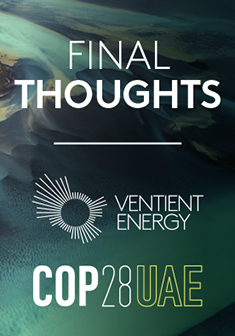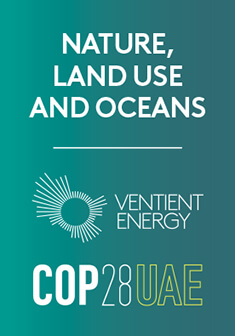“Today, 55% of the world’s population lives in urban areas, a proportion that is expected to increase to 68% by 2050”. The UN.
This increase, known as ‘urbanisation’ brings with it a series of challenges as we grapple with increasing urban emissions and other environmental impacts. City planners and local governments are tasked with managing the growth of our cities in a sensible, effective and low emission manner, that allows urban areas to thrive without causing harm to the inhabitants or the surrounding environment.
It’s not just about how we live, but also about how we move. Transport plays an important role in how we interact with the built environment and is a critical piece of the net zero puzzle. Much of the existing transport infrastructure was not built with a low-carbon future in mind. There are alternatives available, but have they got the capacity to reach the scale necessary and will they be affordable for the masses? How do we plan to move from our current transport system to a sustainable one, without overburdening people with additional expense?
To solve these problems, our national, regional and local leaders must work in a collaborative and inclusive way – a concept known as Multilevel Action, which acknowledges that climate change is a global challenge that requires coordinated responses from all levels of governance.
These are challenges that will be explored at COP28 during the Multilevel Action, Urbanization and Built Environment, Transport day, looking to bring together nations to find common solutions and share knowledge on these topics.
Why do so many of us live in cities, and what does this mean for our climate?
Historically, populations have flocked to cities in search of better employment opportunities and an improved standard of living – escaping rural poverty. In reality, there are a plethora of reasons why people move from rural areas into cities, including better healthcare, education, security, infrastructure and services, cultural diversity, technological advancements and many more. There is also now an influx of ‘rural migrants’ into cities who are actively moving away from the physical climate risk that rural communities are particularly vulnerable to, be it droughts, floods, and other natural disasters.
Because of these reasons, we now live in an age of mass-urbanisation where cities have grown so big that we have 33 cities worldwide known as mega-cities – defined by having a population of 10 million people or more. The largest of these, Tokyo, has an urban population of around 37.5 million people living in an area of ~13,500 km2. According to the Institute of Economics and Peace, by 2050 we will have a further 14 mega-cities to add to this list. This concentration of people and the amenities required to service them leads not only to population hotspots, but also emissions hotspots. According to the UN, cities consume 78% of the world’s energy and produce more than 60% of greenhouse gas emissions. Sustainably managing our cities and other urban spaces will be crucial in our journey to net zero, and conversations at COP28 will be vital to this.
15-minute cities – what do they mean, and what’s all the fuss about?
In recent weeks and months, you may have heard the term ’15-minute cities’ thrown around by politicians and public figures. The term 15-minute city is fundamentally an urban planning and design framework that aims to provide residents within a town or city with all the basic services they need – schools, medical clinics, gyms, parks etc, within a 15-minute walk or cycle from their front door. The idea has been around for years, and it aims to simply reduce our dependence on cars, improve quality of life, and create more sustainable and resilient urban environments. Sounds ok, doesn’t it?
There are several cities worldwide that have adopted the concept and have seen great success, such as Paris, Barcelona, Melbourne and Portland. If executed properly it encourages, not forces, people to drive less because there is simply less of a need to get in the car in the first place. A reduction in cars on the road not only reduces congestion and traffic, but it also reduces vehicle emissions and improves air quality, leading to numerous health and climate-related benefits. It is important to note that not every city or town is suitable for this model, but it is hard to see many downsides to this approach.
It’s fair to say, however, that 2023 has been a year of divisive politics, and unfortunately, the concept of 15-minute cities has been used to ‘drive’ a certain agenda (excuse the pun). When talking about 15-minute cities the current UK Transport Secretary Mark Harper, in his speech at the recent Conservative Party Conference said, “what we shouldn’t tolerate is the idea that local councils can decide how often you go to the shops and that they ration who uses the roads and when…”. He was in fact referring to Oxfordshire Councils’ plans to introduce bus and cycle only filters on the busiest roads in central Oxford, as a means of reducing traffic and congestion emissions. This type of proposal is nothing new, and certainly has nothing to do with 15-minute cities. No local council (to the very best of my knowledge) is planning to stop you going to the shops as part of a radical climate policy. You can read more on this here.
The politicisation and misrepresentation of this concept is symbolic of a wider trend we are seeing with climate-related policies and ideas. Climate action will likely be disruptive, difficult, and yes, also expensive. Politicians on both side of the spectrum are using these challenges as political capital for short term gain, undermining the tangible benefits that these initiatives can bring and adding substance to a growing ‘anti’ green policy movement. COP28 will be an important forum to cut through this noise and bring forward real ideas and proposals that can help make our urban areas more sustainable. As we look forward to 2050, the planning, management and maintenance of our urban spaces will be crucial as populations continue to increase, and 15-minute cities may play an important role in that.
Transport – what does a low-carbon transport sector look like and how do we get there?
A low-carbon transport sector refers to a transportation system that significantly reduces its emissions while remaining efficient, accessible, and sustainable. At present, emissions from the transport sector account for around 20% of total global emissions and these emissions are increasing, particularly due to the bounce back from Covid-19.
According to the International Energy Agency (IEA), getting back on track for net zero would require current transport emissions to fall by about 25% by 2030, even with an anticipated growth in demand. So, what do we need to do to get there? Well, achieving this drop will depend on a number of things that touch all sub-sectors of transport – road, rail, shipping, aviation and pipeline transport.
It will require the rapid electrification of road vehicles, possibly first to hybrid, and then on to full EV, as well as the charging infrastructure to facilitate this. It will mean operational and technical energy efficiency measures to improve current technologies, as well as the commercialisation and scale-up of low-emissions fuels (such as hydrogen – providing it is ‘green’), especially in the long-haul, maritime and aviation sub-sectors. And finally, it will involve policies to encourage modal shift to less carbon-intensive travel and behavioural change towards less frequent, more efficient travel.
All of these things will require progressive and well-thought through policy changes that incentivise sector adaptation as well as the fiscal support to deliver them. At Ventient Energy we are on our own journey to decarbonisation by actively exploring hybrid and fully electric alternatives to our existing fleet of company vehicles. While the vehicle capabilities and options are improving, the market still has some clear evolution to do, however, it is encouraging to see more alternatives to fossil fuelled vehicles becoming available. COP28 will explore the latest technologies we have on offer and will look to break down the barriers to mass decarbonisation of our transport systems. It will be a crucial point of discussion at the conference with implications that could touch all of our lives.
Conclusion
In order to achieve sustainable development of our urban spaces and decarbonise our transport systems, governments of all levels need to work collaboratively. Multilevel action is the cornerstone of successful climate action because it ensures oversight and input from international, national, regional and local governments. COP28 will bring together leaders at all levels of governance from around the globe to discuss these areas of action, share ideas and proposals, and forge a common way forward for what are truly global issues. We look forward to seeing what results from this.
Ed Flanders
Climate Impact Lead
Sources:
https://www.sciencefocus.com/planet-earth/in-pictures-the-largest-cities-in-the-world
https://www.statista.com/chart/29152/the-worlds-next-megacities/
https://www.un.org/en/climatechange/climate-solutions/cities-pollution


More articles


COP28 - What happened and was it a success?
Last week we saw COP28 come to a close, and, as President Sultan Ahmed Al Jaber dropped the final hammer of the conference, it’s fair to say there were some mixed emotions regarding the outcome. Over the last 8 weeks, we have been following…


Nature, Land Use & Oceans
We are facing an ecological “polycrisis” The 2023 Global Risk Report[i] published by the World Economic Forum warns that the world is hurtling towards an era of “polycrises”, meaning multiple interconnected crises happening at the same…


